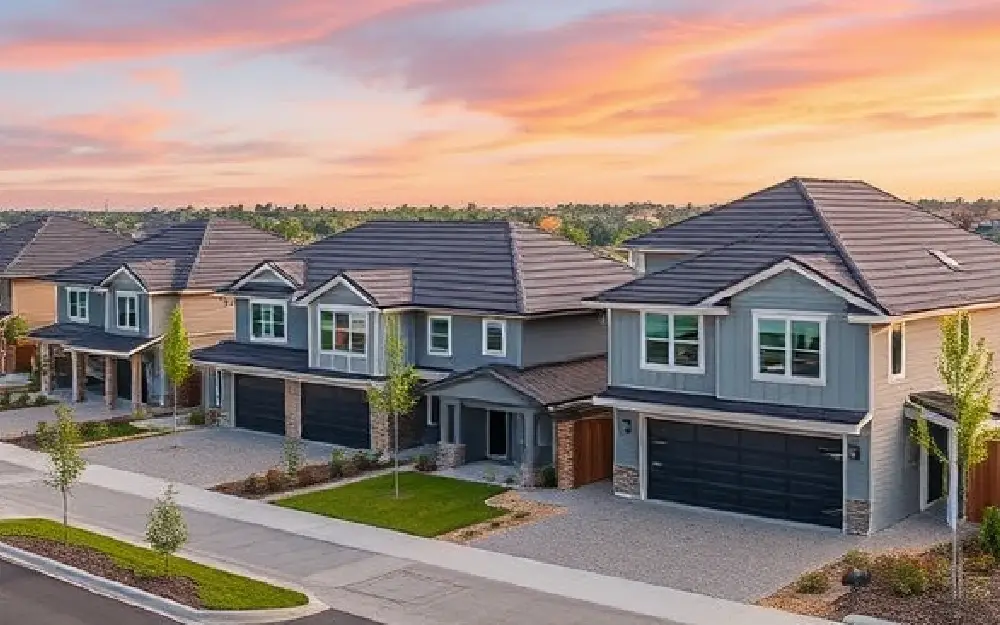
Affordable Housing Solutions in New Subdivisions
As the demand for housing continues to rise, finding affordable options has become one of the most pressing challenges for many communities. New subdivisions are emerging as a solution to this problem, offering a variety of affordable housing options that cater to diverse needs. These modern developments provide a fresh approach to homeownership, blending affordability with modern living standards. Here’s how new subdivisions are helping address the affordable housing crisis.
1. Efficient Use of Land and Space
One of the ways new subdivisions are making housing more affordable is by efficiently using available land. Builders in new developments are often designing homes with smaller footprints or multi-family units, which help reduce land costs. By optimizing the use of space, developers can offer homes at a lower price point, making them accessible to a wider range of buyers.
Additionally, modern subdivision layouts often include shared community amenities like parks, walking trails, and recreational facilities. These features improve the overall quality of life without significantly raising individual housing costs.
2. Economies of Scale in Construction
Large-scale developments allow builders to take advantage of economies of scale, which can reduce the cost per unit. When developers construct multiple homes at once, they benefit from bulk purchasing of materials, streamlined construction processes, and labor efficiencies. These cost savings are often passed on to homebuyers, making the homes more affordable than custom-built or smaller developments.
This approach also helps ensure that homes are built to modern standards, with energy-efficient designs, quality materials, and contemporary layouts, without sacrificing affordability.
3. Incentives and Subsidies for Buyers
Government programs and private-sector incentives often make buying a home in a new subdivision more affordable. First-time homebuyer programs, tax credits, and low-interest loans can significantly reduce the financial barriers to homeownership. Many new subdivisions partner with local government agencies or non-profits to offer affordable housing options, including income-based pricing and down payment assistance.
In some cases, builders and developers may also offer special financing options or discounted prices for buyers who meet certain criteria, such as income restrictions or essential worker status.
4. Sustainable and Energy-Efficient Features
Many new subdivisions incorporate green building practices and energy-efficient technologies to reduce long-term living costs for homeowners. Features like solar panels, high-efficiency appliances, advanced insulation, and smart thermostats help lower utility bills, making homes more affordable over time. In addition, energy-efficient homes have a smaller environmental footprint, which appeals to a growing segment of buyers interested in sustainability.
These sustainable features can make new homes in subdivisions not only affordable in terms of purchase price but also in terms of ongoing operating costs, making homeownership more accessible in the long term.
5. Affordable Rentals in New Subdivisions
Not all buyers in new subdivisions are looking for homes to own, and developers are addressing this by providing affordable rental options. Multi-family units, townhouses, and duplexes are often part of new subdivision designs, offering affordable rental alternatives. These options allow people who may not be ready or able to purchase a home to still live in a new, modern community at a lower monthly cost.
By integrating rental homes into these developments, builders can offer a range of housing options that accommodate both buyers and renters in the same neighborhood, ensuring greater flexibility for different income levels.
6. Proximity to Jobs and Transportation
Affordable housing isn't just about lower costs; it's also about convenience and access to essential services. Many new subdivisions are strategically located in areas with easy access to major employment centers, public transportation, and amenities like schools, hospitals, and shopping centers.
Proximity to work and public transportation can save residents significant amounts of money on commuting, which adds to the overall affordability of living in these new subdivisions. As more people are able to work remotely or access public transit, the affordability of housing in suburban areas becomes even more appealing.
7. Community Engagement and Inclusivity
New subdivisions often include plans for community development and engagement. Developers and planners are increasingly mindful of creating inclusive communities where residents from different income brackets, backgrounds, and life stages can thrive together. These communities might include a mix of affordable housing types, including single-family homes, townhouses, and apartment complexes, ensuring that there are options for a diverse range of people.
Furthermore, by promoting mixed-income communities, new subdivisions avoid the issue of economic segregation and help foster a greater sense of community and shared responsibility.
Conclusion: A Bright Future for Affordable Housing
New subdivisions are playing an important role in addressing the affordable housing crisis by providing diverse, accessible options for homeownership and rental living. With thoughtful designs that maximize space, efficient construction methods, sustainable features, and government support, these developments offer a way forward in ensuring that housing remains within reach for more people.
By continuing to innovate and collaborate with local governments, developers, and communities, new subdivisions can provide long-term, affordable housing solutions that meet the needs of today's homebuyers and renters — creating vibrant, sustainable communities for years to come.
